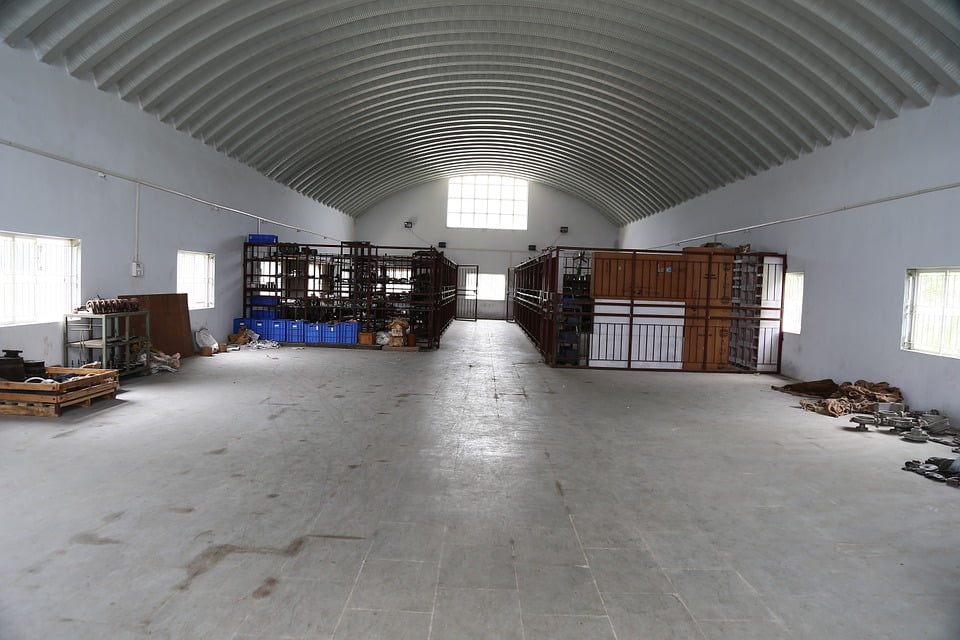You Don’t Need More Space
I’ve been on numerous plants tours over the past few decades. Eventually the tour winds up in either the warehouse or stockroom or both. At some point, I’ll ask whether they’re tight on space and inevitably the answer will be something like “always”, or “we never have enough”, or the real killer “yes, but we have offsite storage”. What I have found in most cases is that the business has plenty of storage capacity; it’s just not managed properly. Even worse, additional storage is nothing but an expensive band-aid to a lack of proper planning and/or the lack of realizing the amount of waste that improperly managed inventory causes.
Let me tell you a story that gives a great example of what was going on and how we addressed it. I had been hired to manage a warehouse for a very well known medical device manufacturer. As part of the interview process, I toured the warehouse. Pallets in the aisles, dust everywhere, equipment everywhere, safety violations, dark, every pallet rack full, pallet wrap hanging off, torn labels, crushed boxes – you get the picture. The warehouse was 20,000 square feet. I was thrilled at the opportunity to turn this operation around. There was so much opportunity. Luckily for me, I got the job. Immediately upon starting, I discovered that another growth in the company required us to give up 13,000 of the 20,000 square footage. I had to give up 65% of our storage space, but keep the same amount of inventory (in fact, probably more due to the impending growth that caused the move in the first place). An awesome challenge to say the least. The warehouse staff was dumbfounded but over the years they had become accustomed to getting bounced around and always last to be considered. They were, however, convinced that offsite storage was the only solution.
We initiated a 6 step process to get this thing under control.
1. Get the Input from the Warehouse Staff
First thing I did was get together with the warehouse staff. I simply asked them for their ideas. What were their daily challenges? If they could build the perfect warehouse what would that look like. As we all know, the best answers are with the workers, not management. As it turned out, we decided to tag every pallet of material that hadn’t moved in over a year. We didn’t waste time going through the inventory management system, the guys knew the answers, this was their space.
2. Include the Buyers and Purchasing Manager in the Process
Next, we pulled the Buyers and Purchasing Manager down to the warehouse. They could not believe how many things we had tagged nor could they believe how old and dusty it all was. As it turned out, many of the items had been written off but never disposed of, some needed to be researched and eventually disposed of. We also found some items that the buyers didn’t know we had that we needed and they were ready to reorder. Suffice to say there was no cycle count program so inventory accuracy was below 80%. With this initial quick review we saved around 6000 of the 13000 square feet we were going to lose.
3. Work with Suppliers to Implement Kanbans
Third, we looked at which items were taking up the most space. As it turned out, we had pallets of corrugate and finished goods packaging using up nearly 1000 square feet. The inventory would come in unannounced triggered by the Buyer using the forecast. No consideration to space or what was actually being pulled from manufacturing. Everything was being pushed through the warehouse. As you might suspect, this caused quite a bit of tension between the two groups (never mind the wasteful steps that too much inventory causes). So, we took a look at where this material came from. As it turned out, it all came from the same vendor, which was less than an hour from the plant. We contacted the vendor to see if they would be willing to deliver to us with a days notice. They happily agreed saying they do that with many of their clients. They hold the inventory and set up a JIT (just in time) system. In the warehouse we then set up a kanban (visual signal) to trigger when to reorder the material. We reduced our storage needs for these items from 2000 square feet to 300.
4. Design the Facility for Optimal Flow
Fourth, we removed barriers to the flow. My predecessor had installed fencing to keep the incoming material separate from the accepted materials. The problem with this is the flow of incoming material fluctuated constantly and being constrained by a fence was causing havoc and worse forcing the staff to break compliance rules by storing unaccepted material in the aisles outside of the fence. An auditors dream for sure. Instead of the fencing, we utilized removable belt stanchions which can be adjusted in length so we could change the size of the area as demand required. Easy to use and flexible.
5. Work with the Facility Manager to Design what was Truly Needed
Fifth, I met with the Facility Manager responsible for the reconstruction of the area. We discussed removing as many obstacles as possible including doors and walls that simply were not needed along with improving the lighting so that they were as high as possible to increase our usable vertical storage space while improving safety by getting more powerful lights. I also went over new order fulfillment plans (our building was across the street from the production area as well as connected to the second manufacturing plant) to clearly explain our requirements. Prior to our discussion he just figured we needed a room to store stuff. I explained the importance of the warehouse operation and made him realize it all starts at the receiving dock and if materials don’t flow to and from the warehouse, the entire facility is affected. Turns out, most people outside of warehouse operations are oblivious to its importance.
6. Review the Materials Being Stored and their Storage Requirements
Last, but not least, our sixth step at addressing the space issue was to review the size of the materials we were storing. We discovered a significant number of materials were small parts but being stored on heavy duty pallet racking. We picked up all of the additional square footage we needed by pulling all of these parts together (over a thousand skus) and designing a narrow aisle storage area which utilized all of the vertical space along with adjustable steel shelving.
To summarize, the six steps we took to find all the space we needed were:
- Get the input from the warehouse staff
- Include the Buyers and Purchasing Manager in the process
- Work with suppliers to implement kanbans
- Design the facility for optimal flow
- Work with the Facility Manager to design what was truly needed
- Review the materials being stored and their storage requirements
Realize that overtime a warehouse takes on a story of it’s own – each item has a history, a past, a story almost like a book that gets put on a shelf which eventually collects dust and becomes part of the furniture. This can be avoided with a little focus and attention and learning to see what can be rather than simply accepting things as they are.
By David Visco

David Visco is President and Co-Owner of The 5S Store. Along with being a 5S and Visual Control expert he is also a warehouse and stockroom design and efficiency expert. If you’d like assistance getting your warehouse to flow optimally give him a call at 978-842-4610 or drop him a line at david.visco@the5sstore.com








